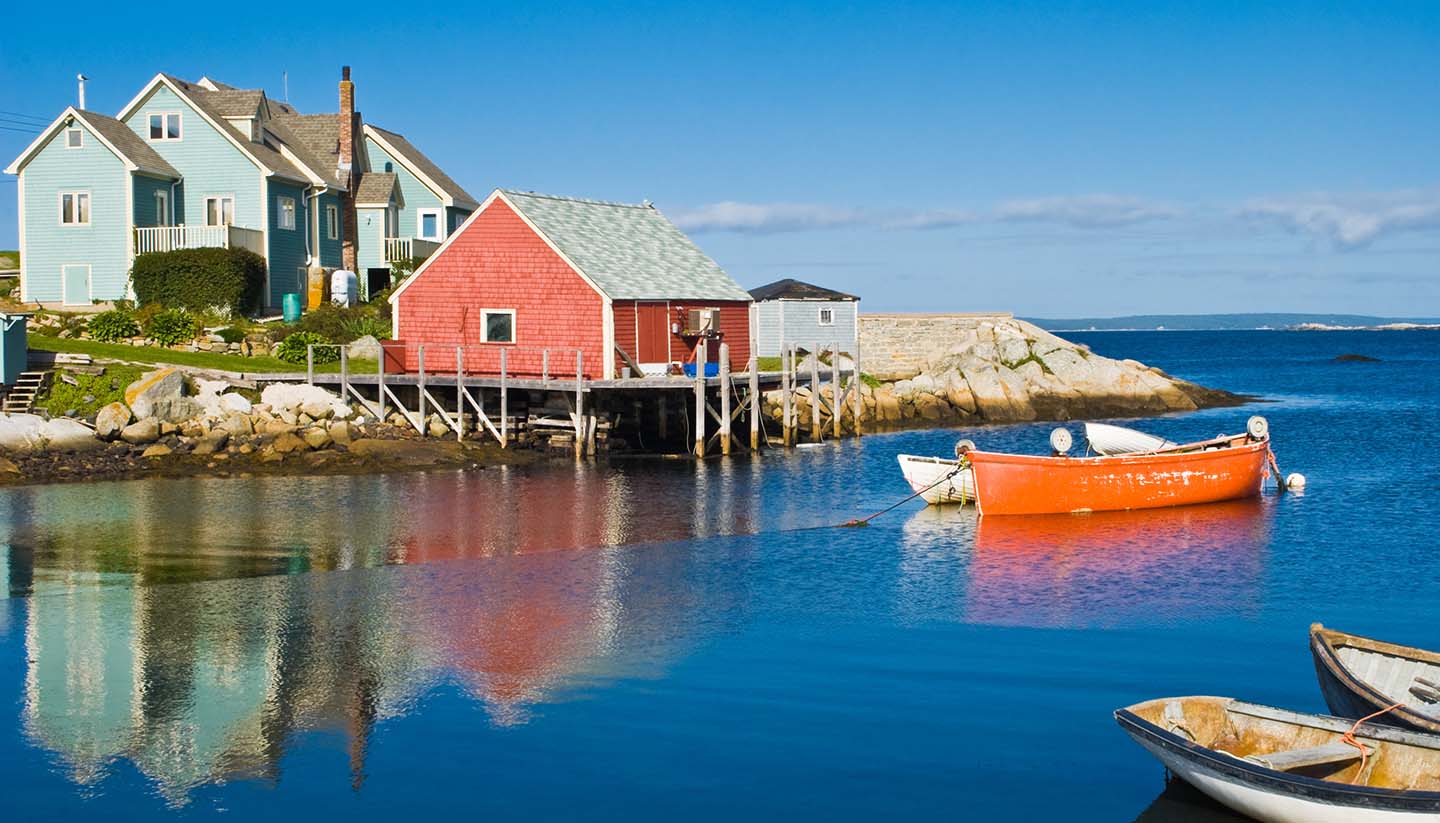Nova Scotia Food and Drink
Seafood is king in Nova Scotia. You can crack open fresh-from-the-ocean Atlantic lobster, munch on crab and nibble succulent Digby scallops. Farms and vineyards fill the Annapolis Valley, where you can pick your own fruit or taste the latest Nova Scotia vintage. There's a strong focus on locally grown fruit and veg, and farmers' markets crammed with regional produce dot the province. In the capital, the Halifax Seaport Farmers' Market has been running since 1750 and is now housed in a contemporary waterfront building.
Specialities
• Seafood galore: try fish and clam chowders, lobster and salmon. Scallops come fried, baked or grilled, and are usually served with tartare sauce.
• Solomon gundy (a herring dish).
• Lunenburg sausage exemplifies the German influence, as do hugger in buff, fish and scrunchions, Dutch mess and house bankin – all names for tasty combinations of fish and potatoes in cream sauce, onions and salt pork.
• Desserts make use of plentiful fruit and berries, especially blueberries, and include a stewed fruit and dumplings dish calledgrunt, and baked apple dumplings wrapped in pastry and served with cream, sugar or lemon sauce.
• Annapolis Valley fiddleheads (furled ostrich fern shoots).
Things to know
Beer, wine and liquor are sold in licensed restaurants (you must also order food) and in licensed lounges (where you don't need to buy food). Beer and wine only are sold in pub-style beverage rooms, which offer snacks and light meals.
Tipping
It's customary to tip 15 to 20% in bars and restaurants.
Drinking age
19.
Regional drinks
Nova Scotia beer warmer is a glass of beer with a dash of hot pepper sauce to get the blood circulating again. Provincial breweries include Alexander Keith's and Propeller Brewing Company.
Nova Scotia is also a popular cool-climate wine-producing area, especially in the Annapolis Valley. Canada's original single malt whisky,Glen Breton Rare, is produced by the Glenora Inn and Distillery in Cape Breton.


